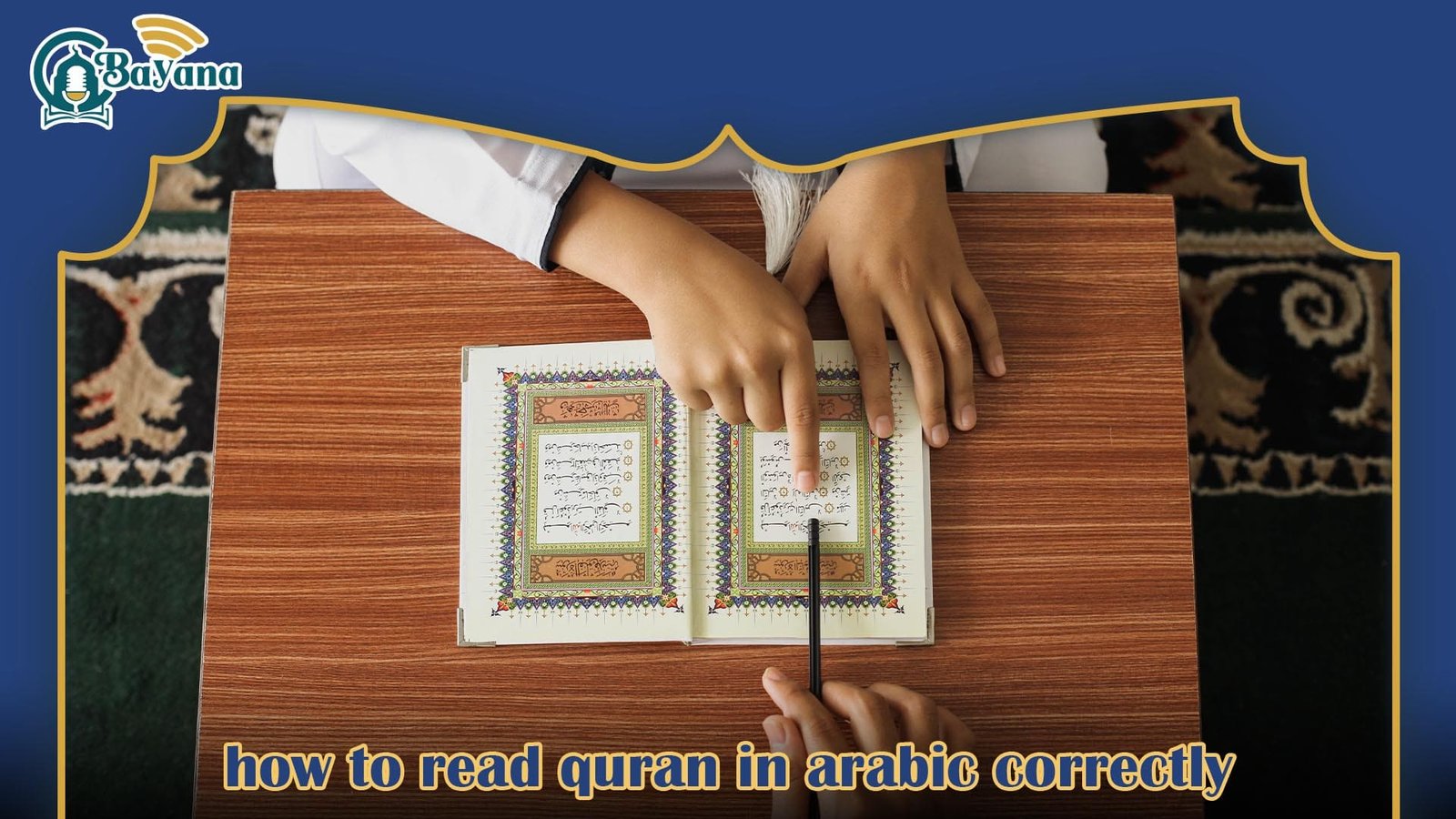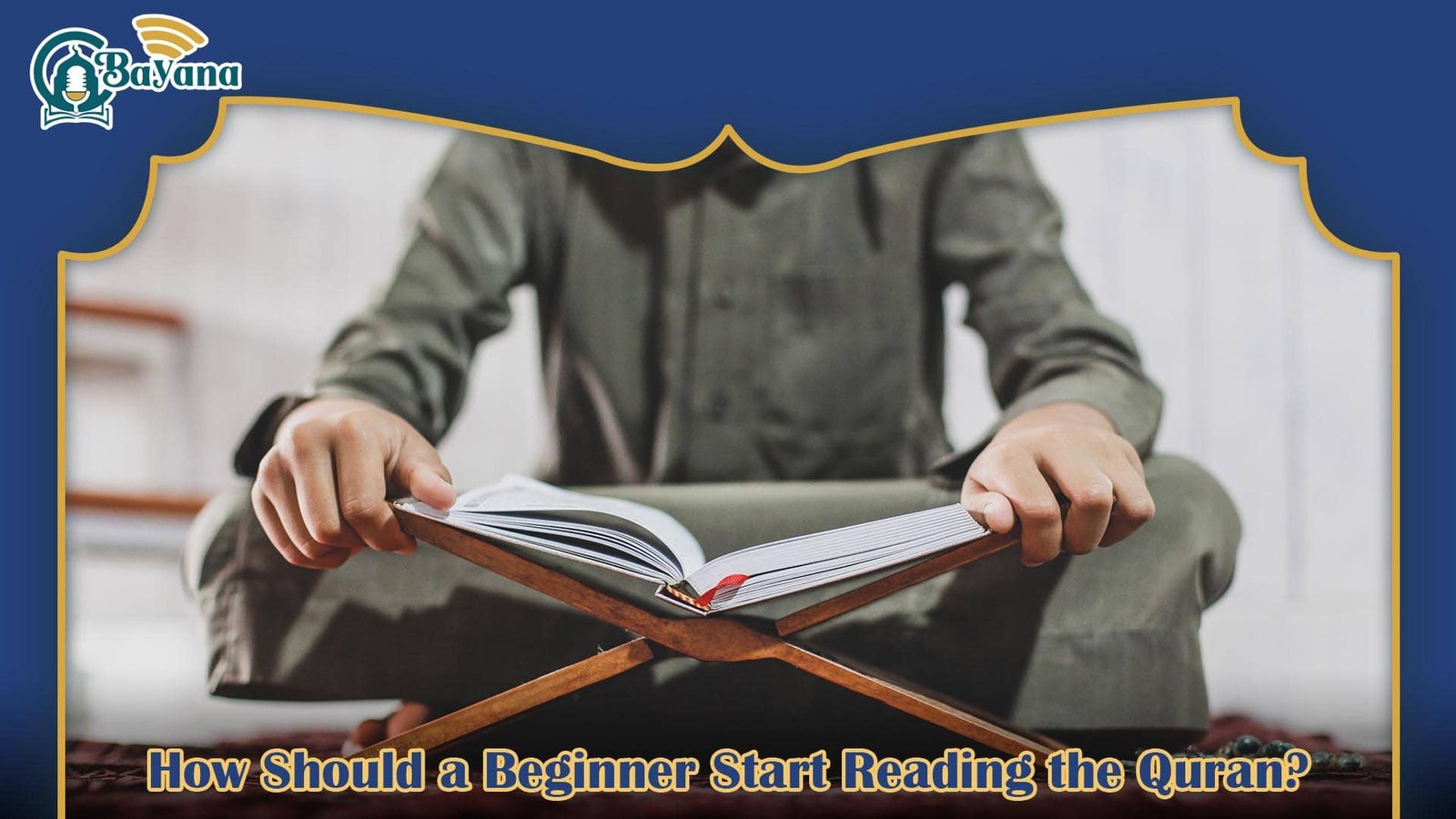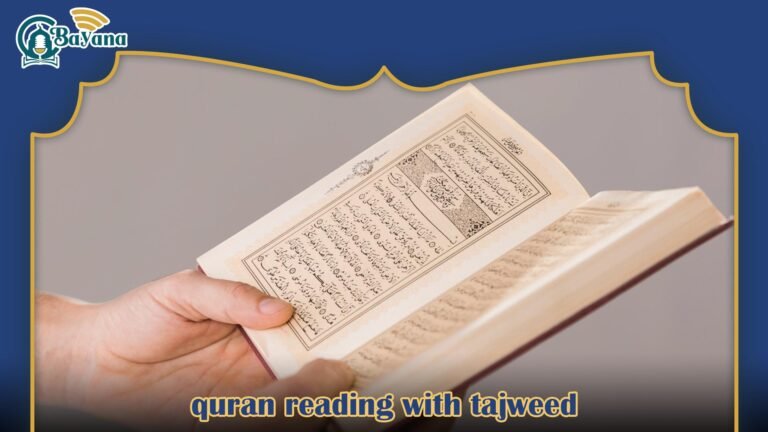Start your free trail Now

how to read quran in arabic correctly 2025
- On
- InUncategorized
For many Muslims and learners of Islam, understanding how to read Quran in Arabic correctly is a vital step toward connecting deeply with the holy text. Mastering the original language of the Qur’an allows readers to appreciate its rhythm, structure, and divine eloquence in ways that translations cannot fully capture. With proper guidance, consistent practice, and the help of qualified teachers, students can develop accurate pronunciation, apply Tajweed rules, and recite with confidence and reverence—preserving the sacred tradition as it was revealed.
The Unique Rewards of Reading the Quran in Arabic

Engaging with the Quran in its original Arabic is a deeply enriching act that strengthens one’s connection with the divine message. For those starting their journey of understanding the Holy Book, learning how to read Quran in Arabic correctly opens the door to a more authentic and meaningful experience.
When the Quran is read in Arabic, it offers a direct link to the very words revealed to the Prophet. This connection is not only spiritual but also intellectual—giving the reader access to the profound beauty, rhythm, and eloquence that translations often cannot fully capture.
Reading in Arabic enhances comprehension of Islamic teachings and allows for a deeper exploration of key concepts. It also nurtures a greater appreciation for the historical, linguistic, and cultural richness embedded within the Quranic text.
Additionally, learning Arabic strengthens the foundation needed to explore other branches of Islamic knowledge such as Tafsir (exegesis) and Hadith studies. As learners become more confident in reading and pronunciation, memorization becomes easier and more meaningful.
Beyond intellectual growth, the act of reading the Quran in Arabic fosters spiritual discipline, focus, and inner peace. The effort involved in mastering the language brings about personal development and a deeper emotional connection to the message of Allah.
For beginners eager to develop a closer bond with the Quran, investing time in learning how to read it in Arabic correctly is a step that yields both spiritual fulfillment and lasting understanding.
Begin Your Journey: How to Read Quran in Arabic Correctly for Beginners
Unlocking the beauty and depth of the Quran begins with one powerful step—learning how to read Quran in Arabic correctly. For beginners, this journey offers far more than just language skills; it opens a direct path to deeper understanding, spiritual clarity, and a stronger connection to one’s faith.
Whether you’re new to Arabic or already have a basic grasp, there are clear strategies and resources that can help you ease into the language of the Quran. With the right approach and dedication, even a complete beginner can begin to read and appreciate the sacred words in their original form.
1-Laying the Foundation: Arabic Alphabet and Pronunciation
The first and most essential step in this journey is learning the Arabic alphabet and mastering pronunciation. At first glance, the script may seem unfamiliar and even overwhelming—but with patience, consistent practice, and the right tools, it quickly becomes more approachable.
Arabic contains 28 letters, each representing a unique sound. Unlike many other languages, where letters can have different pronunciations depending on context, Arabic letters are consistent in how they sound. This consistency is a major advantage when learning how to read Quran in Arabic correctly.
Start by learning the shapes, names, and individual sounds of each letter. Writing them out by hand is a great way to build familiarity. Pair this with listening exercises—use audio resources that demonstrate how each letter and word is properly pronounced. Mimicking native speakers, especially when reciting Quranic verses, helps develop proper rhythm, tone, and fluency.
Daily practice is key. Even if you only dedicate a few minutes a day, the progress will build over time. Consistency helps lock in your understanding and gradually builds confidence.
2-Tools and Techniques for Learning
In today’s digital world, there are countless resources tailored to beginners looking to read the Quran in Arabic. These include interactive lessons, pronunciation guides, flashcards, and online tutorials designed specifically for learners at all stages.
Many of these platforms offer step-by-step support and practice exercises to help reinforce what you’ve learned. They often include recitations, voice recordings, and visual aids to make the learning process more engaging and effective.
It’s also helpful to work with structured learning materials, such as beginner-level books or guides designed for Quranic Arabic. These typically start with letter recognition, move into basic vocabulary, and eventually build up to full verse reading and comprehension.
3-Embrace the Journey
Learning how to read Quran in Arabic correctly is not just an educational goal—it’s a spiritual journey. There will be challenges, but each small milestone, from pronouncing your first word correctly to understanding a verse on your own, is a significant achievement.
Be patient with yourself and stay committed. Celebrate your progress, no matter how small. The journey may take time, but the rewards—both worldly and spiritual—are profound.
By focusing on the basics, committing to daily practice, and using quality resources, you’ll build a strong foundation in reading the Quran as it was originally revealed. And through this process, your connection to the words of Allah will deepen, bringing peace, purpose, and clarity to your path forward.
Essential Resources and Overcoming Challenges in Learning Quranic Arabic
Learning a new language is a journey filled with both challenges and rewards—especially when it comes to understanding the Quran in its original form. For those eager to discover how to read Quran in Arabic correctly, using the right tools and methods can make all the difference.
1-Helpful Resources to Support Your Learning
There is a wide variety of resources available today to help beginners navigate Quranic Arabic. A good starting point is enrolling in an Arabic course designed specifically for Quranic studies. These often focus on basic grammar, pronunciation, and vocabulary tailored to the language of the Quran.
Reliable translations in your native language are another essential tool. They allow you to follow the meaning of the verses while simultaneously improving your Arabic comprehension. Pairing a translation with an Arabic-English dictionary helps expand your vocabulary and clarify unfamiliar terms found in the Quran.
Listening to skilled Quran reciters can also greatly enhance your pronunciation and rhythm. Paying close attention to how each word is recited allows you to mimic proper intonation—an important step in mastering how to read Quran in Arabic correctly.
There are also digital tools available, including mobile apps and websites, offering interactive learning experiences. These platforms may include transliteration, quizzes, flashcards, and audio examples—all of which support your progress at your own pace.
Finally, connecting with others on the same path—whether in person or through online communities—can provide encouragement, motivation, and opportunities to exchange tips and insights.
2-Common Challenges for Beginners and How to Overcome Them
As with any new skill, learning Quranic Arabic comes with its fair share of hurdles. One of the initial challenges is becoming familiar with the Arabic alphabet and its pronunciation. While it may seem complex at first, breaking it down letter by letter and practicing consistently can make it feel more manageable over time.
Building vocabulary can also be difficult. Since many Quranic terms are unique and not often used in daily conversation, dedicating time to learn them using dictionaries or digital tools is a smart approach.
Another common obstacle is correct pronunciation. Because understanding the Quran often depends on how a word is pronounced, it’s essential to listen to expert reciters and repeat verses aloud regularly. This practice reinforces the right sounds and builds confidence.
Maintaining motivation is another challenge, particularly when progress feels slow. It’s important to remind yourself of your goal: connecting directly with the words of Allah. Each step you take brings you closer to reading the Quran with clarity and understanding.
Joining study groups or online forums can also keep you engaged. These communities provide a sense of shared purpose and often offer helpful advice and emotional support during tough moments.
3-A Meaningful Journey of Connection and Growth
Starting the journey to read the Quran in Arabic is more than just a linguistic endeavor—it’s a spiritual experience that fosters a deeper relationship with your faith. By learning how to read Quran in Arabic correctly, you gain not only the skills to recite accurately but also access to the profound wisdom and guidance contained within each verse.
The process requires dedication, patience, and consistent effort. Set realistic goals, take it step by step, and celebrate each milestone. Begin with short daily readings, gradually increasing as you grow more confident.
Make use of the many resources at your disposal—from online tools and audio support to books and peer learning. And most importantly, never lose sight of your purpose. This path offers both intellectual growth and spiritual elevation, enriching your life and deepening your connection to the Quran.
Embrace the journey with an open heart, and let every word you learn bring you closer to the beauty and depth of divine revelation.
Tips for Beginners: Expanding Vocabulary and Enhancing Pronunciation
For those just beginning their journey in learning to read the Quran, mastering vocabulary and pronunciation are two foundational skills that make a significant difference. Understanding how to read Quran in Arabic correctly starts with focusing on small, consistent steps that build both fluency and confidence.
1-Master the Arabic Alphabet
Start by familiarizing yourself with the Arabic letters and their individual sounds. Practice writing each one and pronouncing them aloud. This basic step is essential, as accurate pronunciation begins with a solid grasp of each letter and how it functions within a word.
2-Use Vocabulary Cards or Digital Tools
Building a strong vocabulary takes time. Create simple flashcards with frequently used Quranic words and their meanings. Digital apps or printable cards can help you revise regularly and see words in different contexts, making it easier to remember them.
3-Read Aloud, Slowly and Clearly
Practicing out loud is one of the best ways to develop clarity in recitation. Take your time with each verse, concentrating on the rhythm, tone, and correct articulation of every word. This approach not only strengthens pronunciation but also deepens your connection with the meanings.
4-Listen and Imitate
One effective method for improving how you pronounce Quranic Arabic is to listen carefully to skilled reciters. Pay attention to their pacing, tone, and the subtle differences in how they pronounce certain letters or vowels. Mimicking their style can accelerate your own progress.
5-Get Guidance When Possible
Whether through an online course or an experienced Arabic speaker, seeking structured feedback can be very beneficial. A mentor can correct your pronunciation, recommend study methods, and guide you in using the rules of tajweed (pronunciation and phonetics) properly.
6-Be Patient and Stay Consistent
Language learning is a gradual process. Don’t get discouraged if progress feels slow at first. Consistency, even just a few minutes each day, will eventually bring noticeable improvement.
By focusing on vocabulary and correct pronunciation from the start, you’ll build the tools needed to understand and recite with clarity. Over time, these efforts will bring you closer to achieving your goal of learning how to read Quran in Arabic correctly—with both accuracy and spiritual depth.
Understanding Tajweed and Its Impact on Quranic Recitation
Tajweed, at its core, refers to the art of enhancing and refining the way the Quran is recited. It goes beyond simply reading; it involves applying a precise set of phonetic rules that preserve the clarity, beauty, and authenticity of Allah’s words. Learning Tajweed means striving to recite the Quran as it was originally revealed to the Prophet Muhammad (peace be upon him) through the Angel Jibreel—maintaining the correct pronunciation, rhythm, and articulation of every letter and sound.
The significance of Tajweed lies in its role in safeguarding the true meaning of the Quran. Without proper application of these rules, even small pronunciation errors can lead to major shifts in meaning. Similar-sounding letters in Arabic can easily be confused without clear articulation, and improper stretching or shortening of vowels may alter the intended message of a verse. Thus, Tajweed acts as a protective layer, ensuring that the recitation remains accurate and respectful.
Moreover, mastering the rules of Tajweed brings spiritual and emotional benefits. It transforms the recitation into a deeply moving experience, making it more melodious and reflective. Even those who struggle with pronunciation are not excluded from reward—in fact, those who recite with effort and persistence, despite their difficulties, are promised double the reward. This highlights that the process of learning itself holds immense value in the sight of Allah, regardless of the level one reaches.
By learning Tajweed, one is not only honoring the sacred nature of the Quran but also engaging in a journey that deepens their connection to their faith. It encourages consistent practice, nurtures love for the Quran, and brings comfort through the beauty of its sound—reminding every reader that sincerity and effort are always acknowledged by Allah.
Why Reading the Quran is Incredibly Valuable
Exploring the Quran holds deep personal and spiritual value, even for those who are still in the early stages of understanding it. Reading it, regardless of fluency, is considered a meaningful practice that brings calm, focus, and a sense of connection to something greater. This spiritual engagement is more than just an intellectual pursuit—it’s a way to cultivate mindfulness and inner growth.
For many, simply attempting to read the Quran is a journey filled with personal effort and dedication. Even if reading feels slow or challenging, the process itself is rewarding. In fact, struggling through the text with sincerity and perseverance can be just as valuable—if not more so—than fluent reading.
To deepen your connection and grasp the deeper meanings behind the verses, it’s highly recommended to learn tafsir online, which allows you to explore the Quranic context, themes, and insights with the guidance of experienced scholars, all from the comfort of your home.
In short, engaging with the Quran—whether through reading, reflecting, or studying its interpretation—is a powerful way to enrich your spiritual life and gain lasting clarity and peace.
How Should a Beginner Start Reading the Quran?

1- Start With the Right Guidance
The Quran began as an oral tradition. It was shared and memorized by heart, passed from teacher to student over generations. Even today, the most effective way to begin is not by reading alone but by learning directly from a knowledgeable instructor who can help with pronunciation, flow, and understanding, Although modern learners have access to countless recordings and online videos, direct learning—face to face or online live—with a qualified teacher remains unmatched. These teachers not only correct your pronunciation but also help you avoid common mistakes and guide your progress with structure and patience. This method, known traditionally as talaqqi, is how generations before us mastered the art of recitation, You can also learn how to read Quran in Arabic correctly by starting with fundamental lessons in Arabic phonetics and the rules of pronunciation (tajweed). These skills are best acquired with expert guidance.
2. Focus on Learning Before Completing
Many new learners rush to “finish” the Quran, but this approach can be overwhelming. Instead, the priority should be on learning how to recite properly. There are foundational books and programs designed for beginners—such as structured reading guides—that simplify this learning process by introducing Arabic letters and gradually building fluency, Some of the commonly used beginner systems include phonetic-based step-by-step manuals tailored for non-native Arabic speakers. These help learners become familiar with the correct articulation of letters and rhythm of recitation, Start with short, manageable chapters rather than jumping into the beginning of the Quran. The structure of the Quran is not linear like a typical book, so it’s more effective to build confidence and understanding by beginning with shorter, more accessible sections.
3. Stay Committed and Consistent
Every learning journey involves challenges. Stay determined, and don’t hesitate to reach out to your instructor when you face difficulties. Establishing a consistent routine—even just a few minutes a day—can make a meaningful difference over time.
4. Reinforce Learning With Self-Practice
Supplement your lessons by practicing regularly with recordings or digital tools. Repetition is key, especially when developing muscle memory for correct pronunciation.
5. Find the Right Time for Personal Reflection
Early mornings or the quiet moments at night are ideal times to read. These moments tend to be calm and free of distraction, allowing you to focus, reflect, and connect deeply.
6. Build a Supportive Environment
Family members can be great companions in your Quran journey. Parents can lead by example, helping children learn and turning the experience into one that strengthens family ties as well as spiritual growth.
In conclusion, Mastering how to read Quran in Arabic correctly is more than just learning pronunciation; it is about connecting deeply with a timeless source of guidance and wisdom. With patience, the right guidance, and consistent practice, anyone can unlock the beauty and profound meaning embedded in each verse. Remember, this journey is personal and transformative—each step forward brings you closer to understanding and peace. Embrace the process with dedication, and let the Quran’s light illuminate your heart and mind.
Newsletter Updates
Enter your email address below and subscribe to our newsletter



